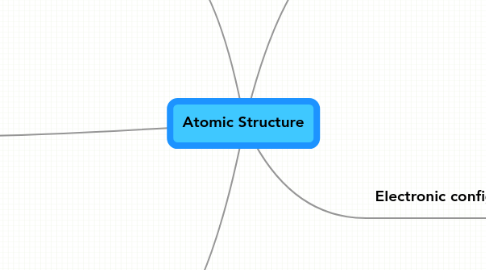
1. Combines Chemically
1.1. Molecules
1.1.1. Molecules of compounds
1.1.1.1. Consists of atoms of different elements
1.1.1.2. Examples
1.1.1.2.1. Hydrochloric Acid
1.1.1.2.2. Methane
1.1.1.2.3. Ammonia
1.1.1.2.4. Carbon dioxide
1.1.1.2.5. Water
1.1.2. Molecules of elements
1.1.2.1. Consists of atoms of the same element
1.1.2.2. Examples
1.1.2.2.1. Nitrogen
1.1.2.2.2. Hydrogen
1.1.2.2.3. Oxygen
1.1.2.2.4. Chlorine
1.1.2.2.5. Phosphorus
2. Gains or loses electrons
2.1. Ions
2.1.1. Gain electrons
2.1.1.1. Usually non-metals
2.1.1.2. Anions
2.1.1.3. Ions are negatively charged
2.1.2. Lose electron
2.1.2.1. Cations
2.1.2.2. Usually a metal
2.1.2.3. Ions are positively charged
3. One atom consist of..
3.1. Electron
3.1.1. Hold a negative charge
3.1.2. mass of 1/1836
3.1.3. 1/2000 the mass of a proton
3.1.4. Number of electron and neutron = mass number
3.2. Neutron
3.2.1. No charge
3.2.2. mass of 1
3.3. Proton
3.3.1. Holds a positive charge
3.3.2. mass of 1
3.3.3. Number of protons = atomic number
4. Isotopes
4.1. Atoms of same element
4.2. Same atomic number
4.2.1. Therefore they share the smae chemical properties
4.2.1.1. Due to same electonic configuration of both isotopes
4.3. Different mass numbers (number of neutrons different)
4.3.1. Different physical properties (Density, melting point and boiling point)
5. Electronic configuration
5.1. Electrons arranged around the nucles in the shells of an atom
5.2. Shells number 1,2,3 and so on
5.3. Each shell can occupy a certain number of electrons
5.4. Finding electron configuration
5.4.1. Find the proton number of the atom
5.4.2. Find out the numbers of electrons from there. (number of protons = number of electrons)
5.4.3. Arrange the electrons in shells. Electrons occupy the shell closest to the nucleus first
5.4.4. Electrons only start occupying a new shell when the previous one has been occupied
5.5. Valence Electrons
5.5.1. Electrons found in the outermost occupied shell of an atom
5.5.2. Outermost shell refers to the shell which is furthest from the nucleus
5.5.3. Nature of elements can be determined by the number of valence elctrons
5.5.3.1. 1-2 are metallic. The exception being aluminium with 3
5.5.3.2. 4-8 are generally non-metallic elements
